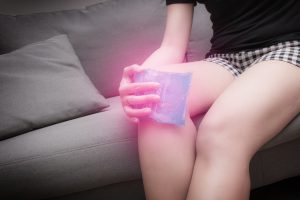
How can these two polar opposite pain-relieving therapies coexist? Easier than you might think. You just have to know how and when to use them.
How to Use Heat Treatment
Heat treatment can be used in a few ways. One is as a preventative measure. By keeping your body relatively warm and taking a proactive approach, you give yourself a chance to improve circulation and relieve stiffness.
What does that look like? It means taking a warm shower or bath upon waking. Spending at least 15-minutes under the warmth can help dilate blood vessels, lubricate joints, and encourage greater ease of movement.
The temperature should not be enough to burn and something that you can tolerate for 15-20 minutes.
Options for heat therapy include:
- Long showers or baths (particularly useful in the morning to ease stiffness after a long night of sleep)
- Electric blankets or warm heating pads for overnight use
- Heating pads, if needed, throughout the day.
There is also some evidence that capsaicin, the active ingredient in chili peppers, can ease joint pain. It may cause a burning sensation at first, but the goal is for it to take effect over time by tricking nerves to become less sensitive to pain.
How to Use Cold Treatment
Cold treatment is better used for acute painful flareups to bring down swelling. Cold temperatures constrict blood vessels to control immune response in a relatively quick manner.
A good strategy is a 5 to 10-minute ice massage at the affected area. Do not directly apply an ice pack or something like frozen peas to your skin.
If pain lasts for more than 48 hours, use heat.
You can use a combination of hot and cold therapies, depending on what symptoms you’re experiencing. You might also find that cold or heat simply works better for you regardless of the symptoms you are experiencing. Experimentation is an excellent way to go.